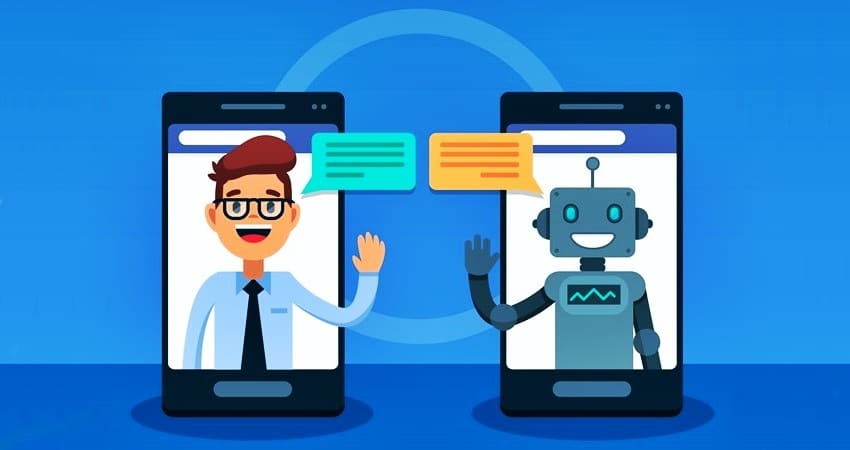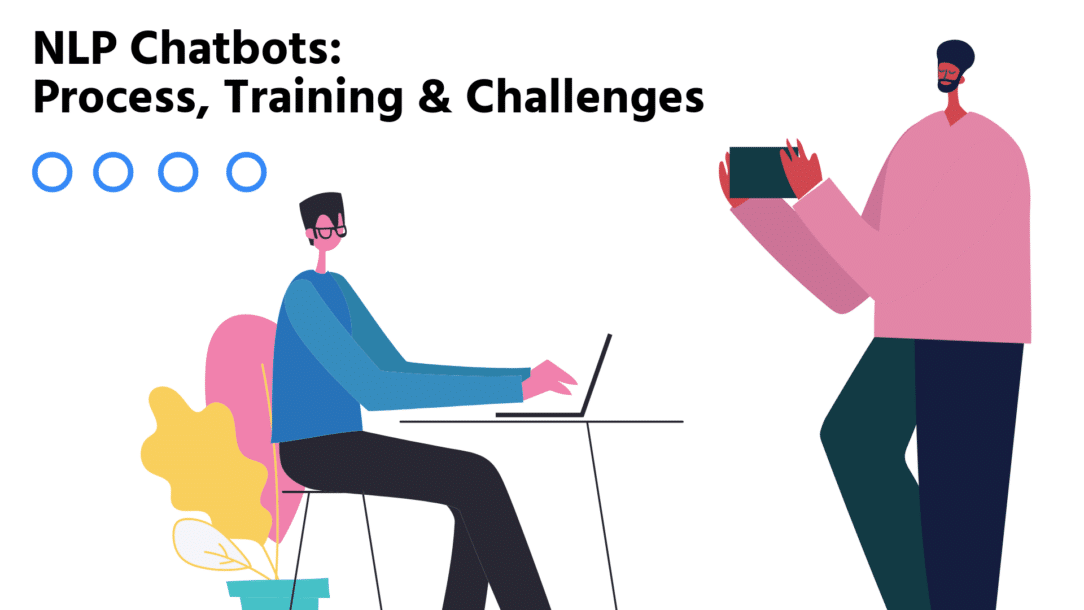2023 is all about quick customer service as the competition among businesses continues to increase. A business that fails to provide an efficient and reliable customer service experience to its customers will likely suffer from low customer satisfaction rates. The decline in customer satisfaction can lead to a reduction in sales and revenue, as well as a decrease in the overall brand image.
That said, businesses must turn to technology and automation for potential solutions. So, what is the best way to provide quick and efficient customer service? Let’s take a look at this guide:
How to Use NLP Chatbots: A Quickstart Guide for 2023
How can you keep up with the rapidly changing customer service needs of your customers? In this article, we’ll discuss the advantages of Natural Language Processing (NLP) chatbots and how businesses can use them to improve their customer service experience in 2023.
What is NLP?
Natural Language Processing (NLP) is an artificial intelligence system that helps machines understand and process natural language. It uses sophisticated algorithms to analyze the meaning of a text or speech and translates it into an actionable command that the machine can execute. Chatbots are applications that use NLP technology to simulate conversations with people. They are programmed to process a user’s input, respond with an appropriate answer, and take the conversation in the right direction.

NLP Chatbot
Source: HiTechNectar
What Are NLP Chatbots?
NLP chatbots are computer programs that use artificial intelligence (AI) and natural language processing (NLP) to understand customer queries and provide appropriate answers. They use sophisticated algorithms to interpret customer dialogue, identify complex concepts, and generate automated responses.
NLP chatbots are becoming increasingly popular in customer service, as they can provide quick and efficient solutions to customer queries. They can provide customers with a personalized experience, and they don’t require human intervention. Businesses can use NLP chatbots to answer customer queries promptly and accurately. This helps customers resolve their issues quickly, resulting in increased customer satisfaction and loyalty.
How do NLP Chatbots Work?
NLP chatbots use natural language processing (NLP) to interpret customer queries and generate automated responses. They use sophisticated algorithms to identify the intent behind customer queries and provide relevant answers. NLP chatbots have access to a large amount of data and information, allowing them to respond to customer queries with accuracy and speed.
They can also be programmed to detect subtle nuances in customer conversations, such as sentiment. This allows them to respond appropriately, providing customers with the best customer service experience. NLP chatbots can also be programmed to learn from customers’ interactions, allowing them to improve over time. This ensures that the customer service experience is continuously improved and enhanced.
Natural language understanding includes:
- Sentiment analysis: This enables the chatbot to determine the tone of customer queries and respond appropriately.
- Entity extraction: Entity extraction helps the chatbot identify and extract relevant entities from customer queries, such as names and locations.
- Pattern recognition: Pattern recognition allows the chatbot to recognize patterns in customer conversations and respond accordingly.
- Dialogue management: Dialogue management helps the chatbot manage the conversation, ensuring that the customer query is addressed and answered in a timely manner.
- Lexical analysis: Lexical analysis helps the chatbot identify key terms and phrases in customer queries, which it can use to provide relevant answers.
- Syntactic analysis: This allows the chatbot to understand and interpret complex customer queries.
- Pragmatic analysis: Pragmatic analysis allows the chatbot to interpret customer queries in a context-dependent manner, ensuring an accurate response. The pragmatic analysis also helps the chatbot detect nuances in customer conversations, such as sentiment.
What is the Process Involved in Creating NLP Chatbots?
When it comes to creating NLP chatbots, machine learning and statistical methods are involved.
- Machine learning method: The machine learning method is used to train the chatbot. This involves feeding the chatbot with large quantities of data, such as customer queries and responses. This allows the chatbot to learn from the data and understand customer queries.
- Statistical method: The statistical method is used to evaluate the performance of the chatbot. This involves measuring how accurately and quickly the chatbot can answer customer queries.
In addition to machine learning and statistical methods, developers also need to consider the user experience when creating an NLP chatbot. This includes making sure that the interface is intuitive and easy to use, and that the chatbot provides relevant and accurate responses to customer queries.
What does the training look like?
NLP chatbots require a lot of training in order to understand customer queries and provide accurate responses. The training process involves feeding the chatbot with large datasets of customer queries and responses. This allows the chatbot to learn from customer conversations and understand customer language. The date depends on the type of business you run and the customer queries you are expecting. Generally, the more training data available to the chatbot, the better it can understand customer queries and provide relevant responses.
The training process also involves testing the chatbot’s performance and accuracy. This is done by measuring how accurately and quickly the chatbot can answer customer queries. Testing allows developers to identify and address any issues with the chatbot’s performance.
The second step in training an NLP chatbot is to optimize its user interface. This includes making sure that the interface is intuitive and easy to use and that the chatbot provides relevant and accurate responses. Thirdly, the chatbot needs to be continuously updated and improved. This involves collecting customer feedback and incorporating it into the training data. This allows the chatbot to better understand customer queries and provide more accurate responses.
When it comes to NLP chatbot training, it is important to note that the process is ongoing and requires continuous effort. As customer queries and needs change, the chatbot will need to be trained and optimized accordingly. That said, let’s talk about the challenges associated with training and maintaining an NLP chatbot.
What are the Challenges Associated with Training and Maintaining an NLP Chatbot?
AI isn’t perfect yet, so training an NLP chatbot can be tricky. You need to keep a few things in mind when training your chatbot.
1) Data Collection:
The quality of the data used to train your chatbot is important. You need to ensure that you have enough training data (customer queries and responses) so the chatbot can learn from customer conversations. The kind of data and its quantity depends on the kind of business you run. For instance, a customer support chatbot for a tech company will require more data than a chatbot for a local cafe. This is because the former has more complex customer queries and needs.
2) Quality of Responses:
You need to make sure that your chatbot provides relevant and accurate responses to customer queries. This involves measuring the chatbot’s performance and identifying areas that need improvement. When testing the chatbot, you should also consider how intuitive and user-friendly the interface is. This can affect the quality of customer experience.
3) Continuous Improvement:
The chatbot should be continuously updated and improved to keep up with customer queries and needs. This involves collecting customer feedback and incorporating it into training data. Additionally, developers should consider new techniques (such as machine learning and statistical methods) that can improve the chatbot’s performance. Things like sentiment analysis can also help the chatbot provide better customer service.
4) It May Require Some Costs:
Creating a chatbot wasn’t cheap, but as the technology has matured, it’s become more affordable. However, as time progresses and technology improves, the cost of building and maintaining a chatbot gradually decreases. If you want to create a custom chatbot with advanced capabilities, you may have to invest in one of the popular chatbot platforms like Clepher. It just costs you one time, and you will receive the benefit of it for a lifetime.
5) Chatbots require regular maintenance:
Chatbots are designed to automate customer service but still require regular maintenance. When training and maintaining a chatbot, you should monitor its performance and continuously update it with new customer queries and responses. Every software has flaws, so you should regularly check for bugs and ensure that the chatbot is updated with the latest customer needs.
But when you see the benefits chatbots bring to improving the customer service process, you will find that the effort and cost of training and maintenance are worth it. For businesses looking to save time on customer service, a chatbot is the best way to go. The right training and maintenance can help improve the customer experience while saving time and money. Overall, NLP chatbots are the most effective way to automate customer service, but training and maintenance are key for successful implementation. With the right approach and effort, businesses can reap the benefits of automated customer service without sacrificing quality.
Leverage The Power Of Chatbots With Clepher.
Clepher is a powerful and easy-to-use platform that helps businesses set up chatbots. It allows businesses to create interactive conversations with customers that provide a personalized experience. You can connect bots from Facebook and Instagram, Send automated messages to customers, capture leads, and much more. With Clepher, businesses can leverage the power of chatbots and gain a competitive edge. Leverage the power of chatbot and create effective customer service experiences with Clepher.
Related Posts



